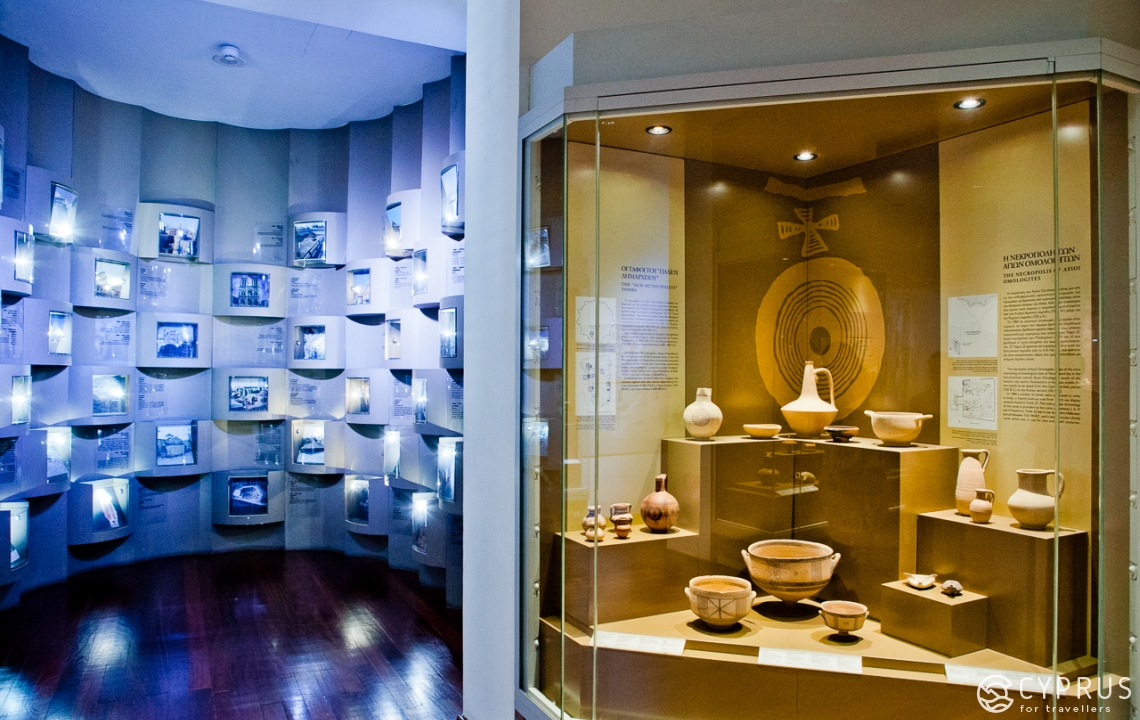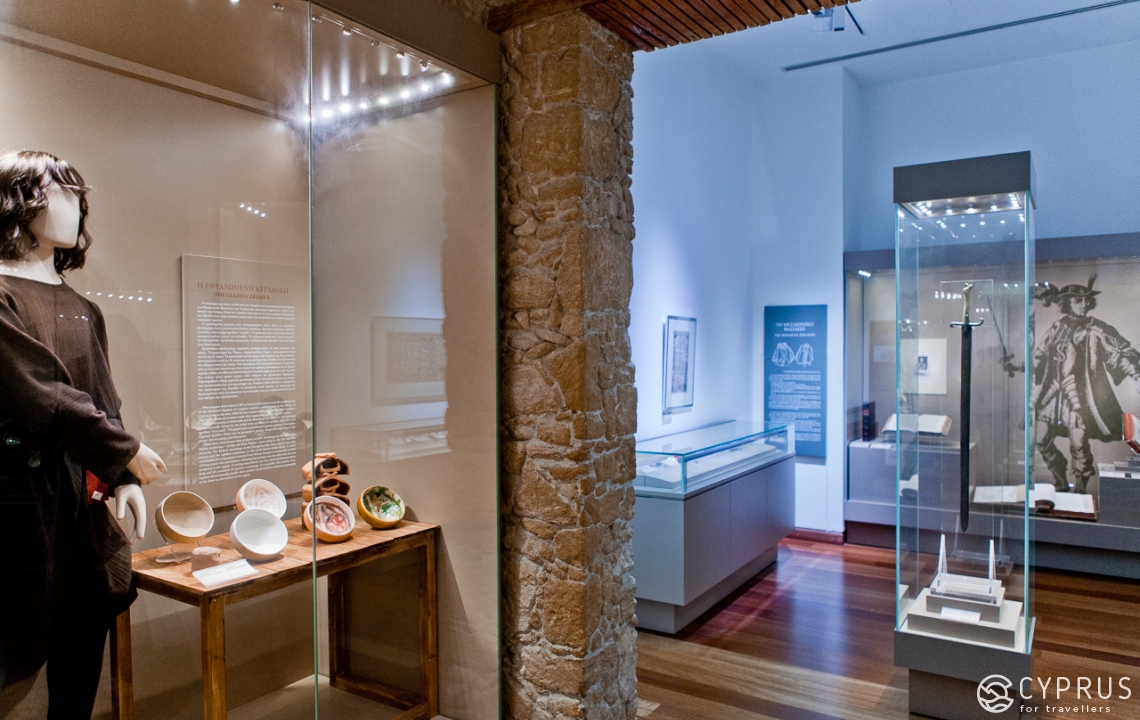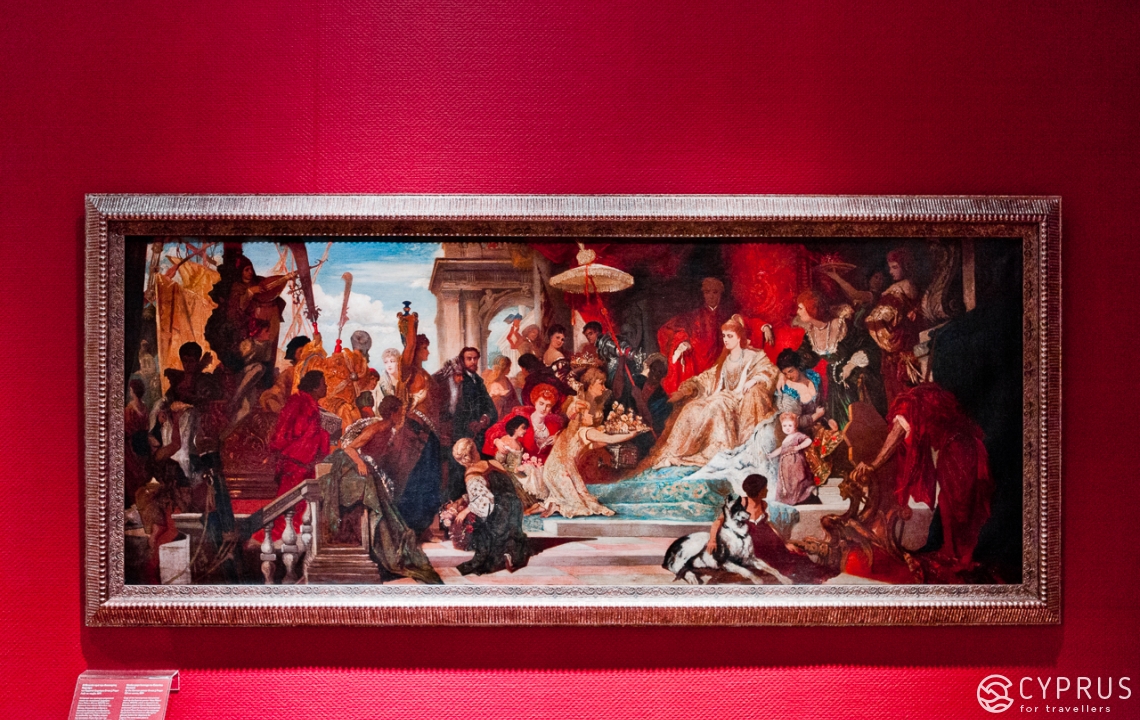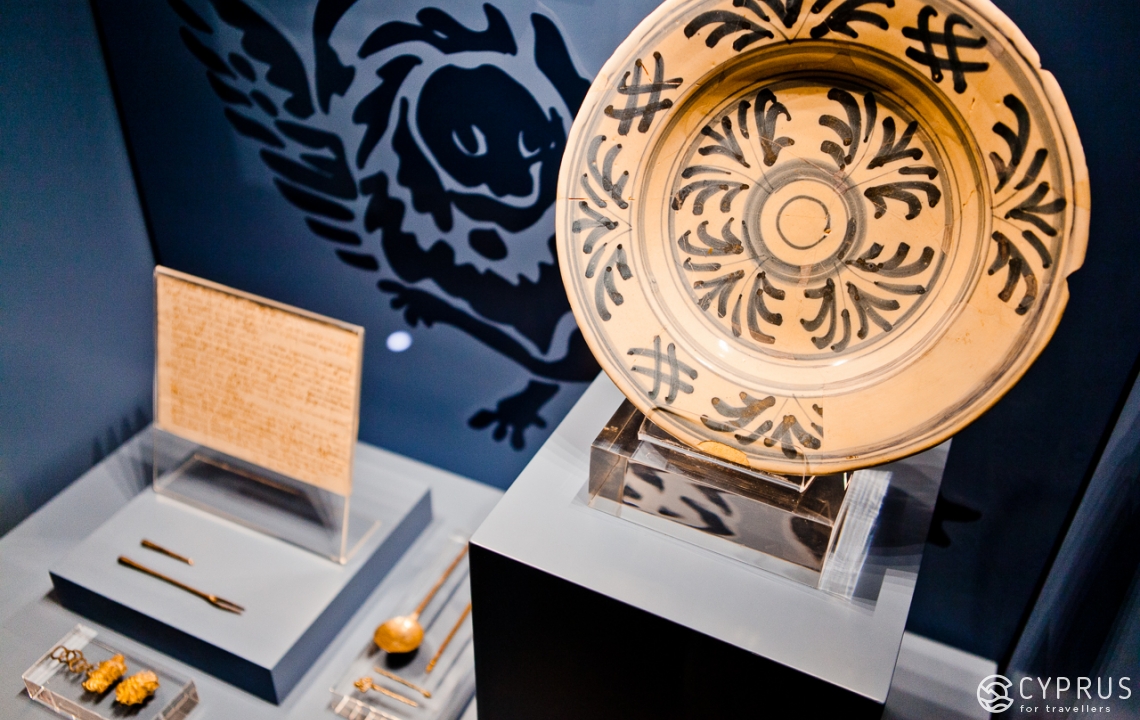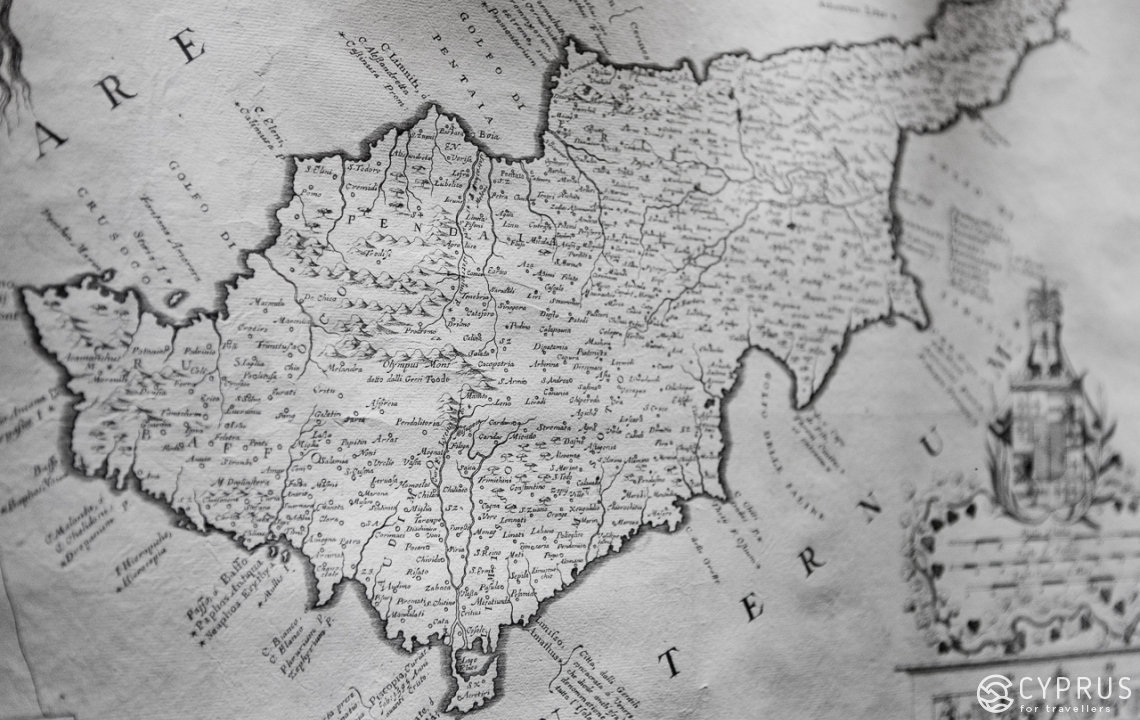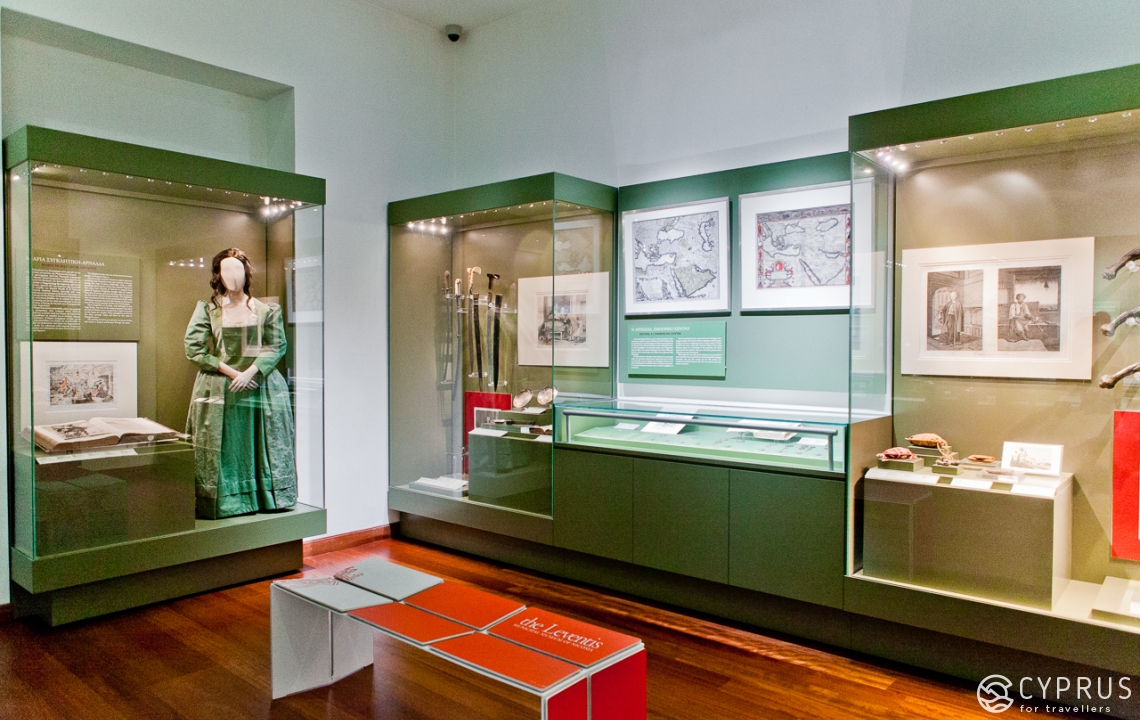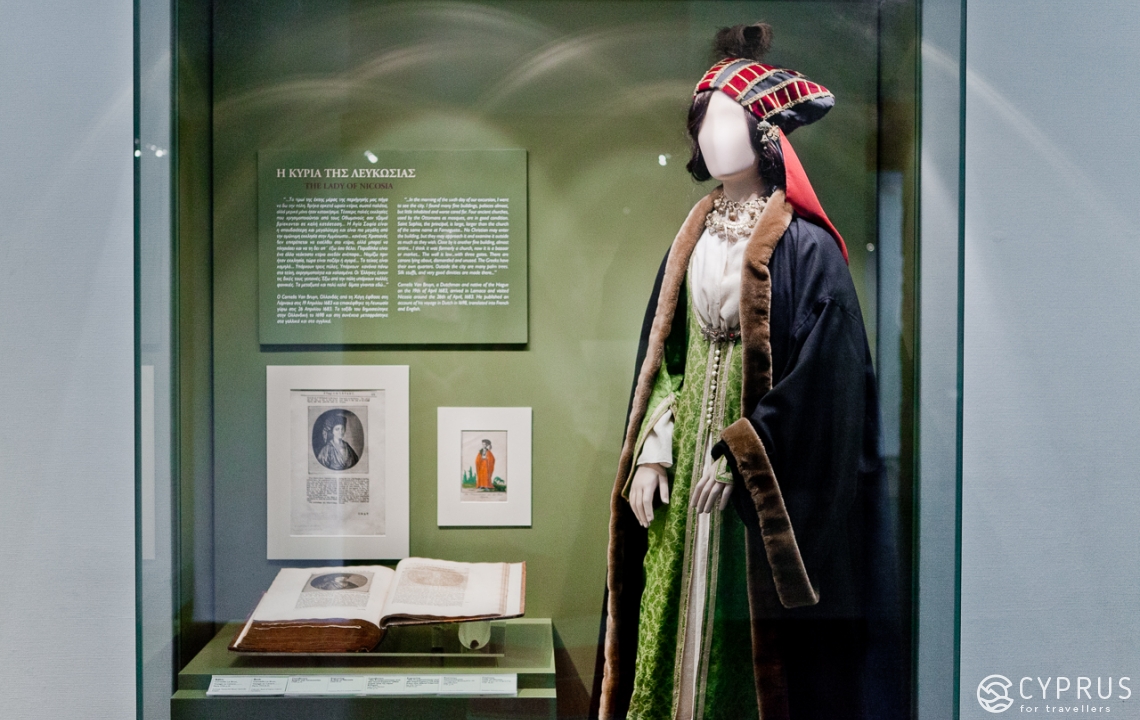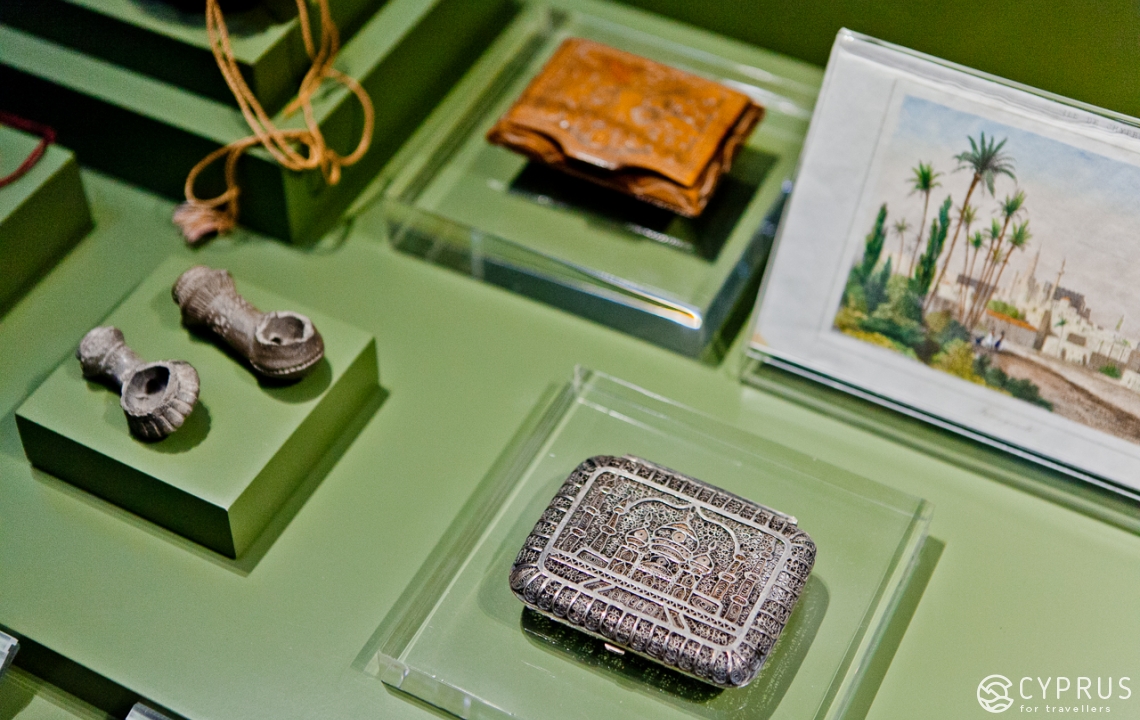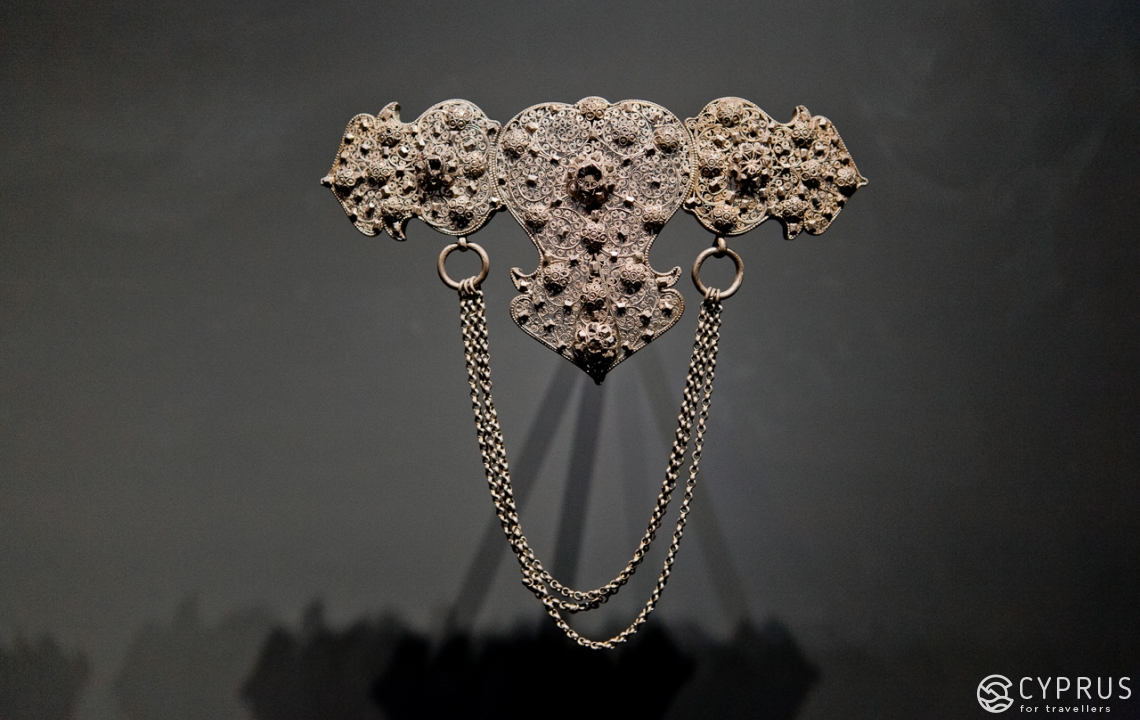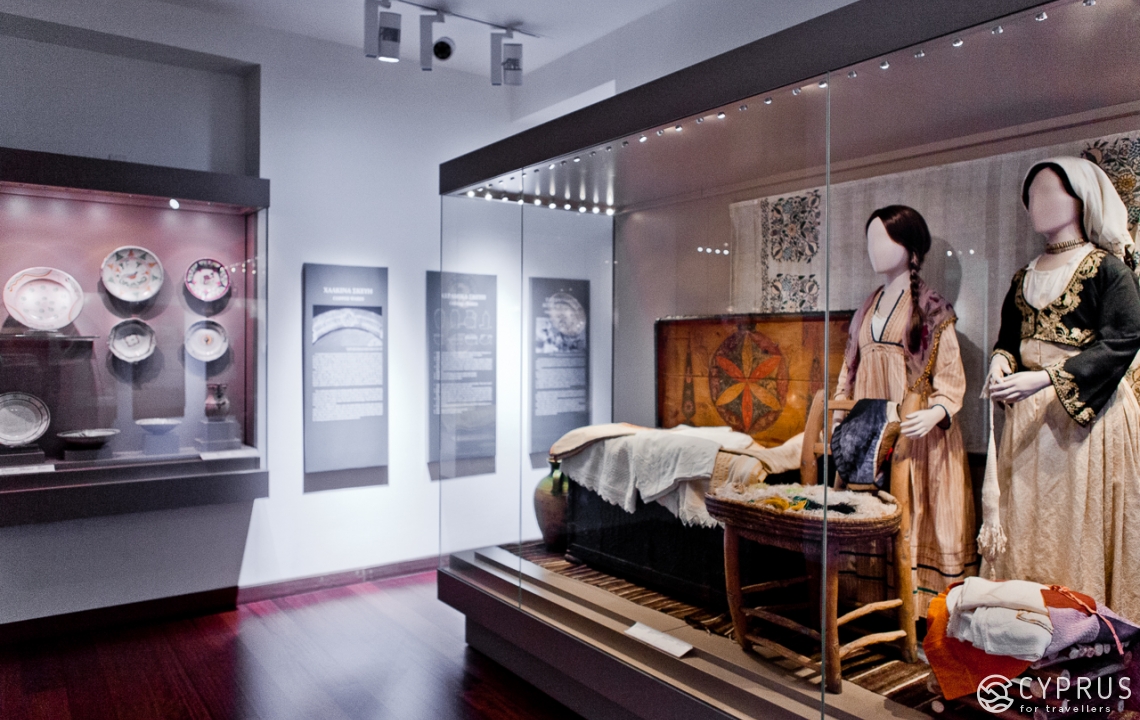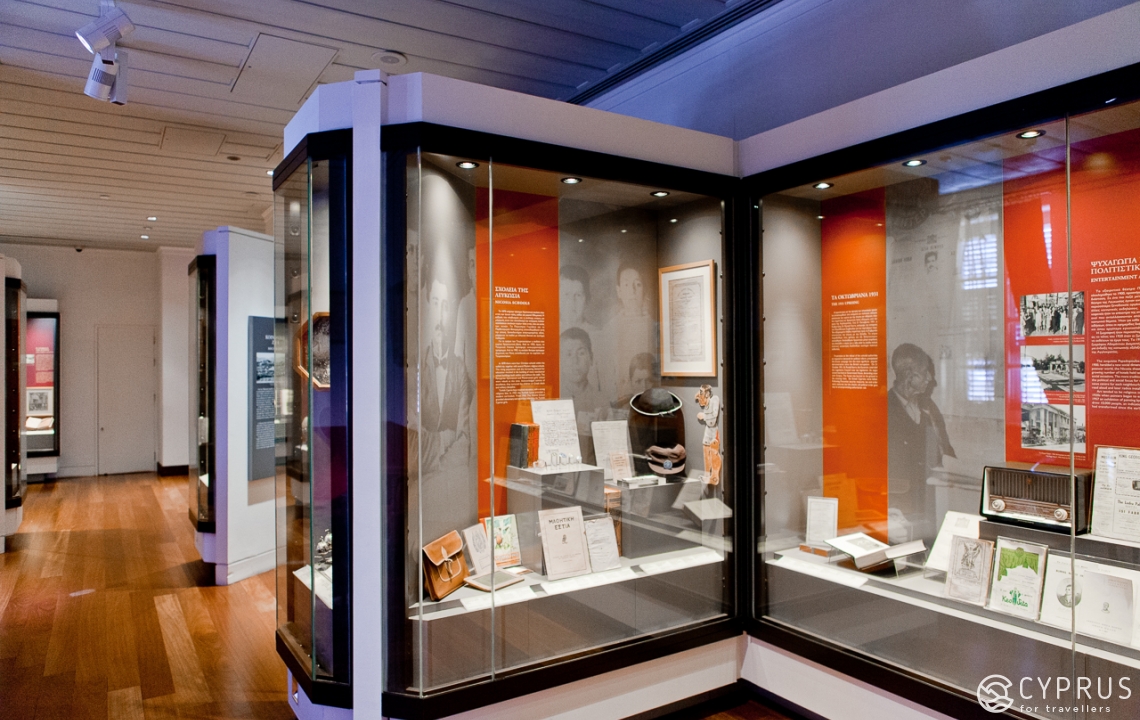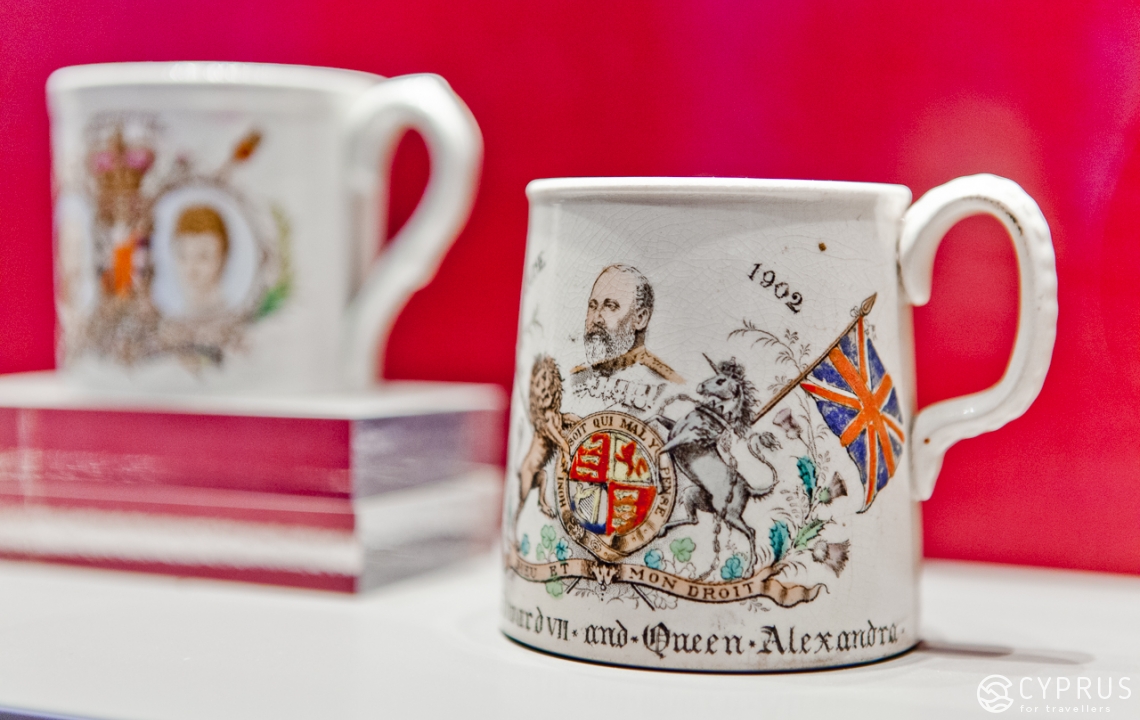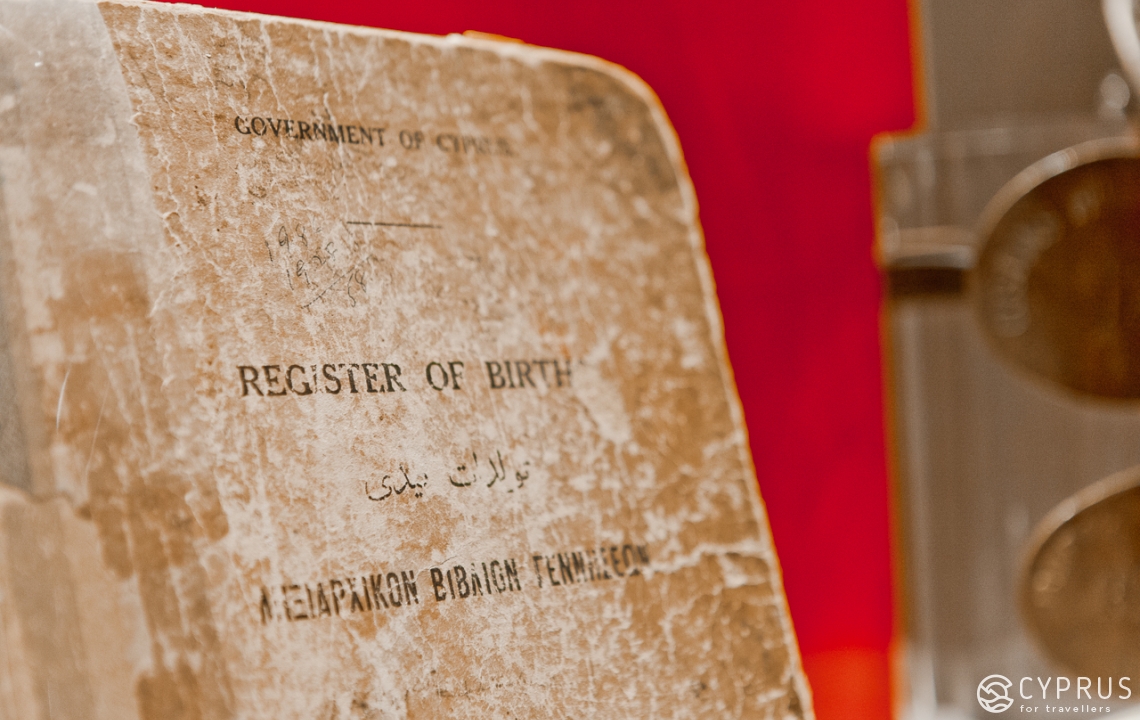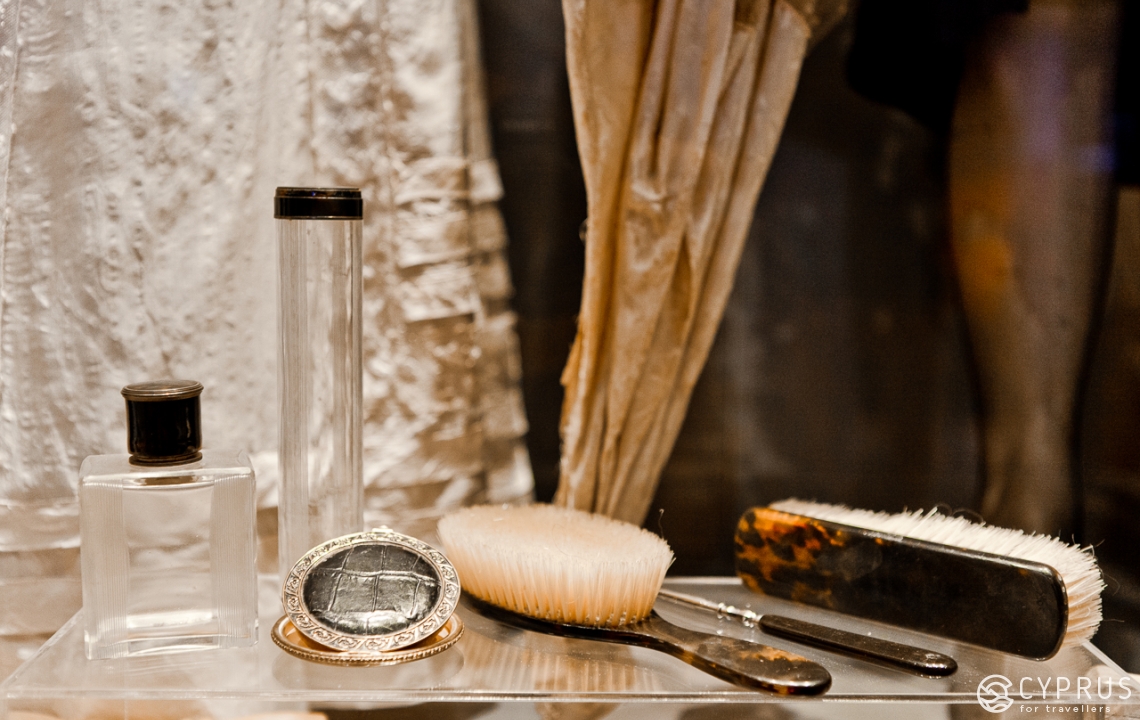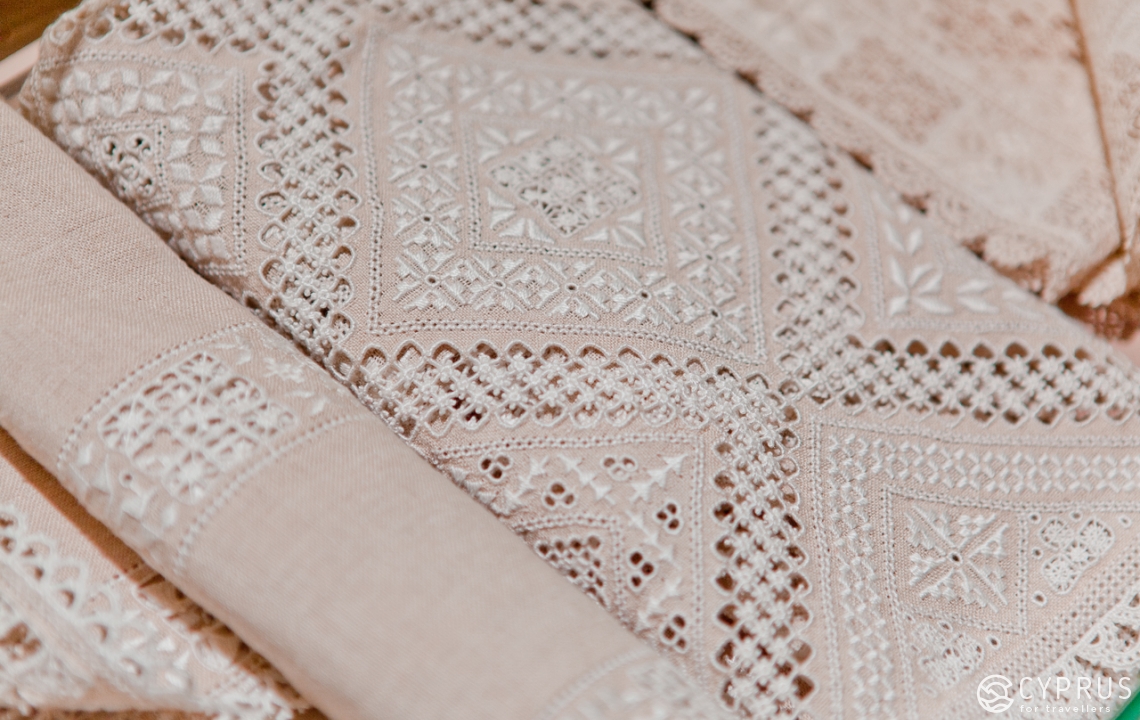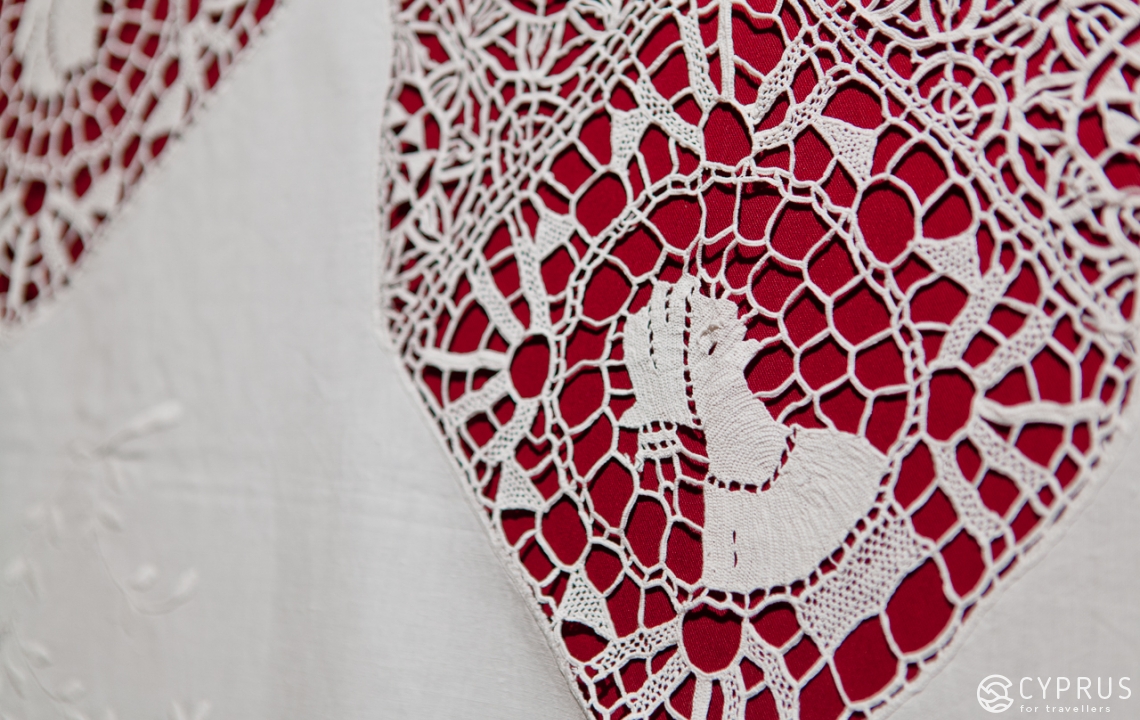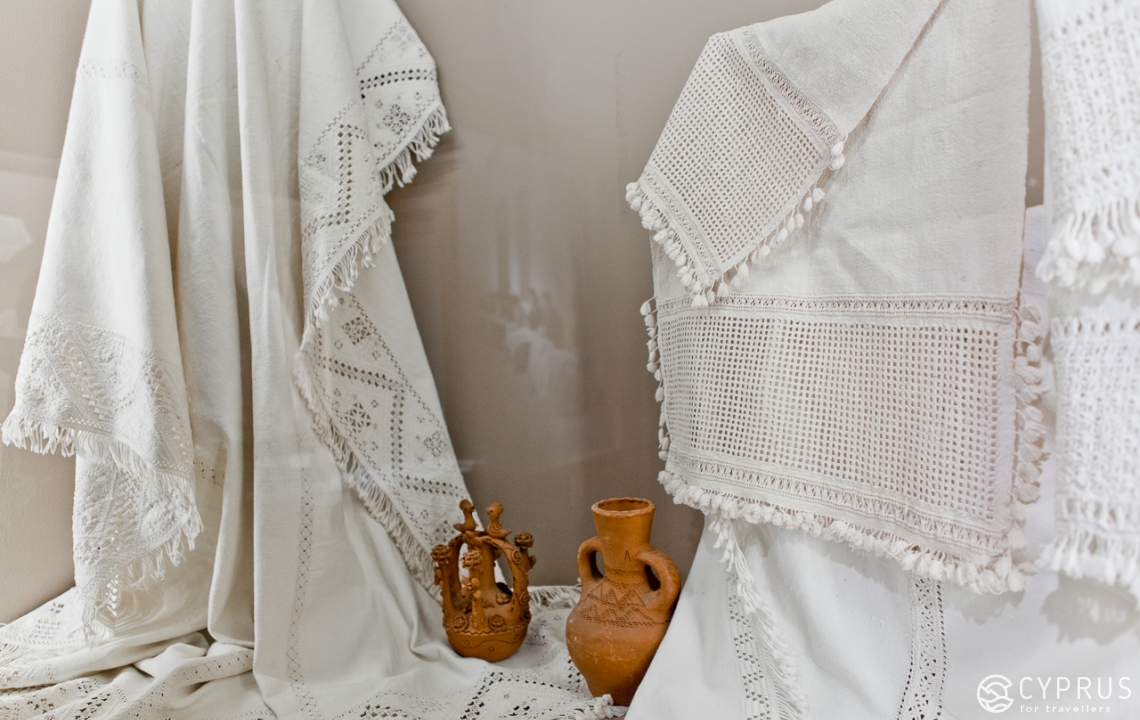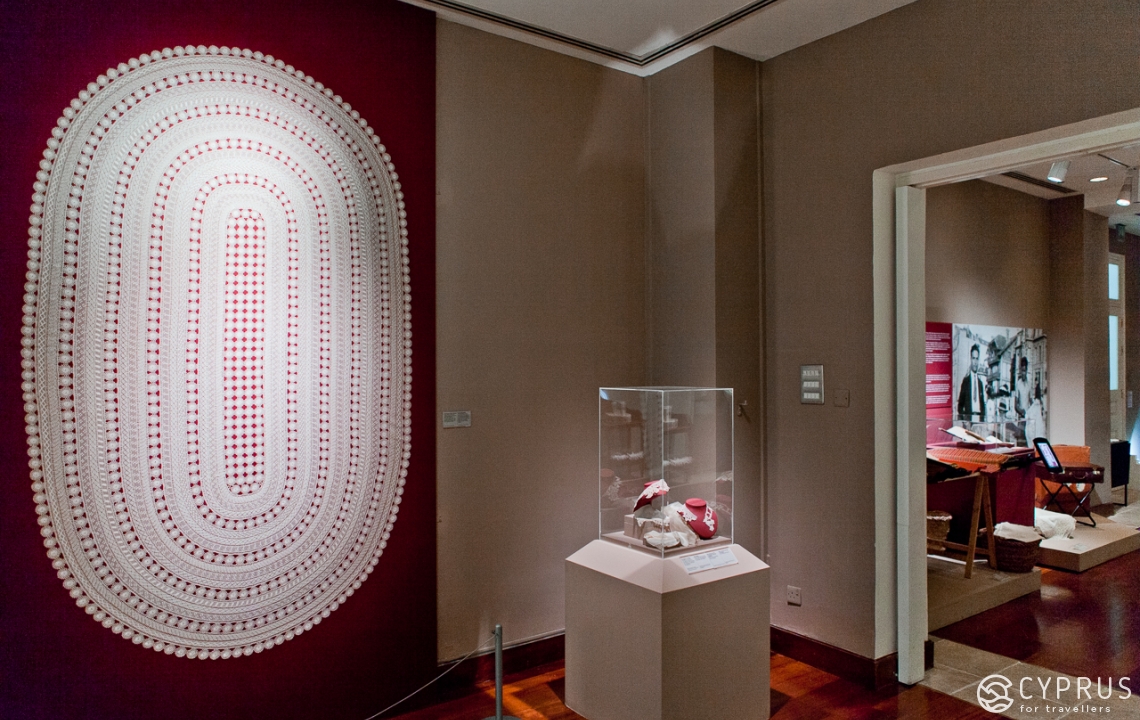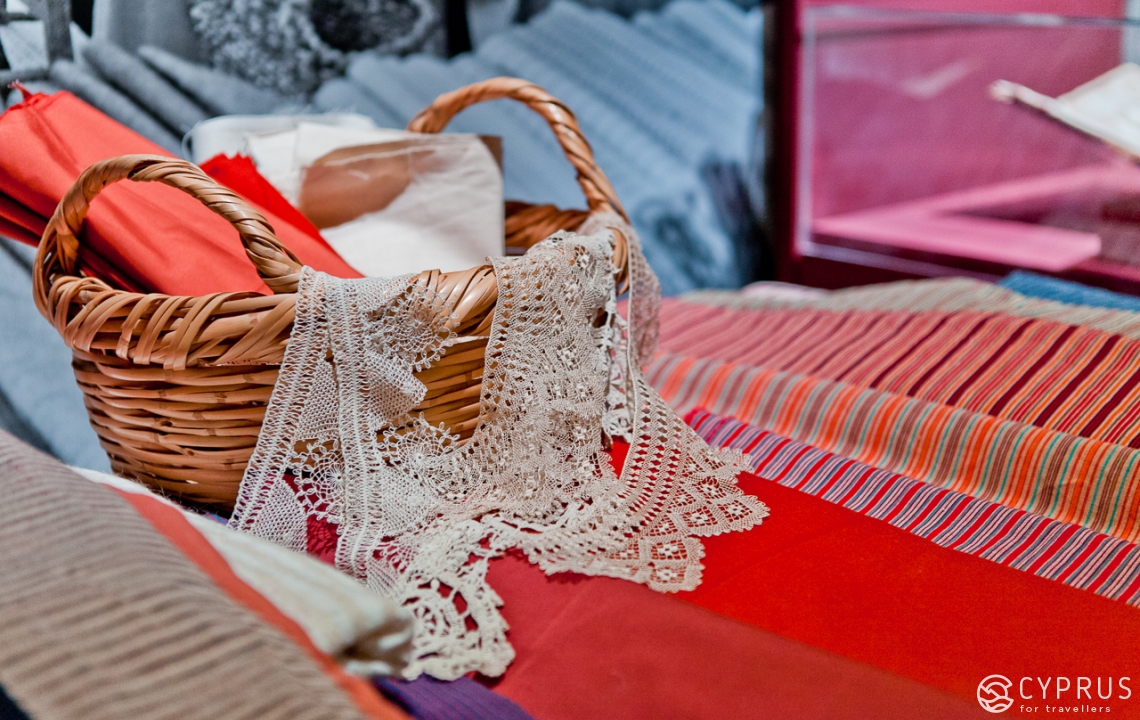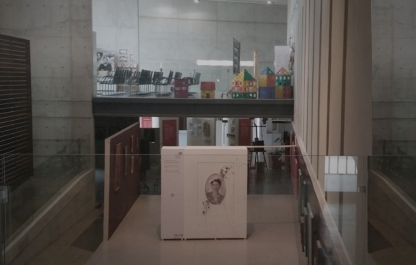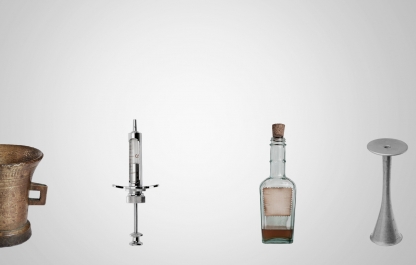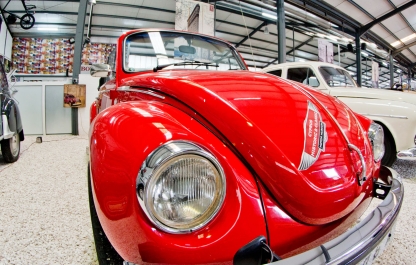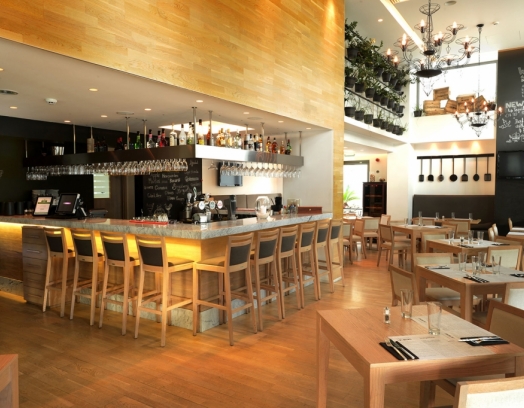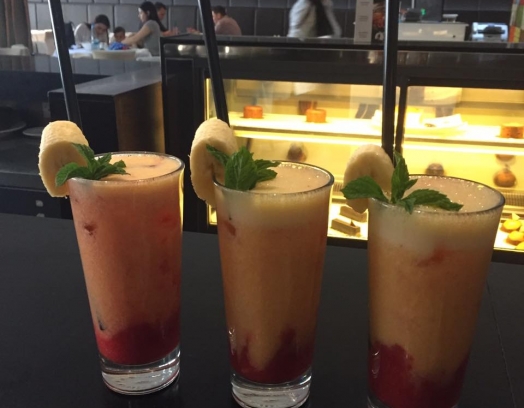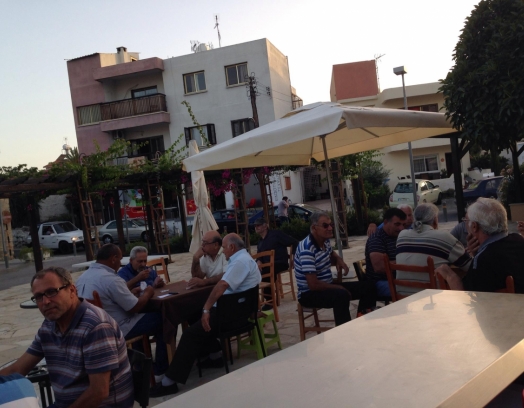Leventis Museum is housed in two buildings that are connected to each other through the exhibition plan. The museum was founded in 1989 by Lellos Demetriades (mayor of Nicosia at the time) and Constantine Leventis. Today the museum’s three floors are home to a collection of rare historic fragments of one of the oldest capitals in Europe.
The permanent collection covers a lot of historical ground: from the prehistoric times and up until the year 1960, when the island gained its independence from Britain. Part of the collection serves as a reminder of the recent history, including contemporary times. The main idea was to explore the history of Cyprus through Nicosia.
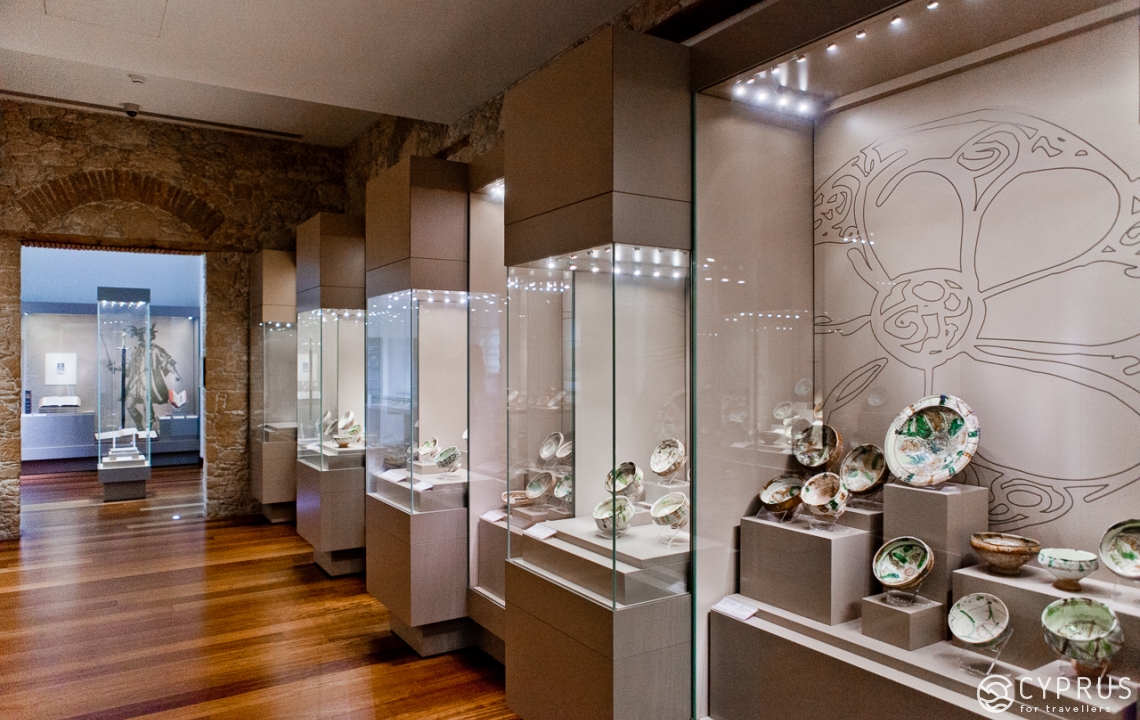
«Every year alongside our permanent collection we hold two short-term and two-long-term temporary exhibitions», says the director of the museum, Ms. Demetra Papanikola-Bakirtze. «We receive a lot of support from the Nicosia Municipality, the Leventis Foundation, as well as the Association of the Friends of the Museum. We are constantly working on raising funds through private and corporate sponsors, which we use to hold temporary exhibitions, support our research and educational programs as well as organize special events».
The exhibition is so extensive; it is hard to cover everything at once. We will tell you about things that we thought were particularly worthy of attention. However, everyone who visits the museum will find something to be fascinated with.
The design and the concept behind the museum changed in 2010 when the permanent collection was upgraded and expanded. Modern technology, creative interior design and ancient artifacts together will guarantee a breath-taking experience.
The past greets you as soon as you step inside the museum. A glass-covered opening in the floor reveals a rare perspective through the foundation of the building onto a fragment of the medieval street. From the look of it we can conclude that the old town streets of the capital have kept their original direction.
In the ancient times (first settlements appeared here in 3900 BC) Nicosia was known as Lidra and then as Lefkotea. It wasn’t the island’s main kingdom at that time. Scientists recently discovered remnants of Lidra not too far from the location of the museum. These remains reveal additional information about past historic periods and help to solve many mysteries.
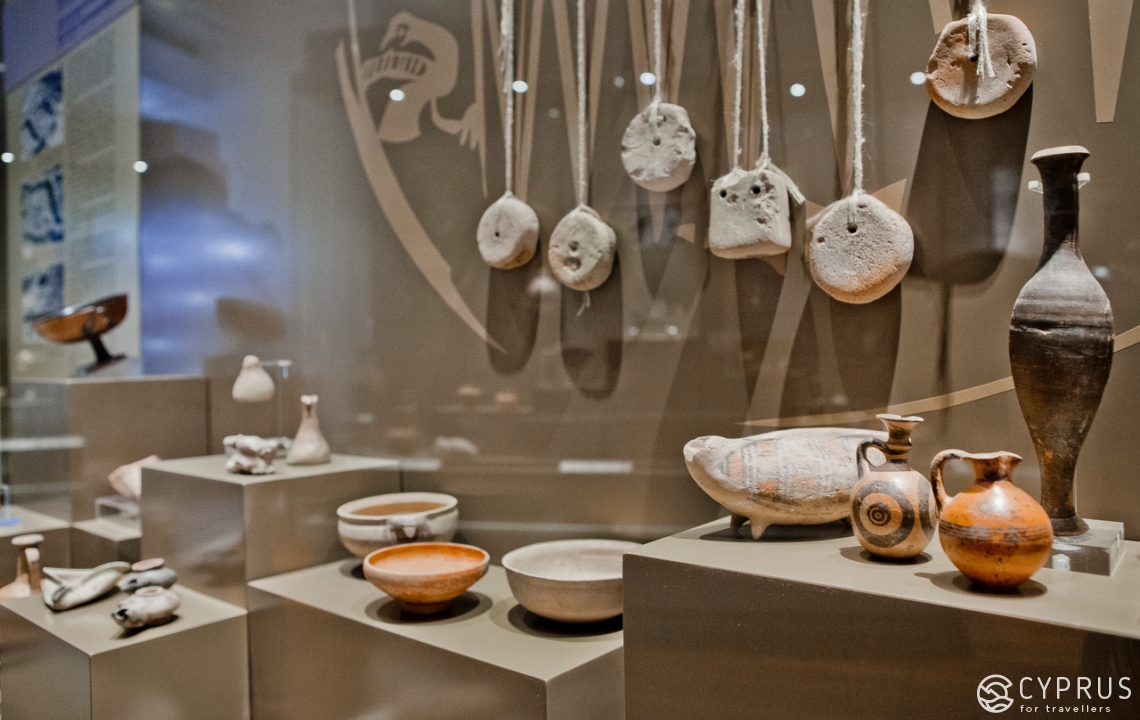
During the early Christian times a small town with its own episcopacy was known as Lefkusia.
Nicosia became politically significant only in the 10th century (a period that also saw the construction of a fortress and the arrival of a Byzantine governor). It held on to this significance up until the 12th century, which is known as the period of Isaac Komnenos — the self-proclaimed ruler of Cyprus (1183-1191), Richard the Lionheart (1911) and then the House of Luisignan, which had purchased the island in 1192. The city was renamed Nicosia only in the 13th century.
Every year on June 13th, the scull of St. Triphyllius, who is considered the patron of Nicosia, is displayed at the Church of Panagia Faneromeni. The scull is kept at the Kykkos Monastery during the rest of the year.
More and more historic treasures are making their way back to Cyprus. These are treasures that were considered lost, stolen or illegally exported. One such example are the copper coins from the Komnenian era, which were brought back from Birmingham.
Another impressive object is the «soaring» crusader sword from the Luisignan era (before 1489).
Cyprus’ medieval ceramics experienced a strong Byzantine and western influence: the glazed cups and plates that depict humans (wedding gifts), animals and birds were in use until the 16th century. According to a number of resources, the technology used to make ceramics today was introduced in the 18th-19th centuries.
Some of the cups on display have openings (traces of plumbic compound), which reflect the objects’ value in the past: they were an object of pride and were greatly cared for.
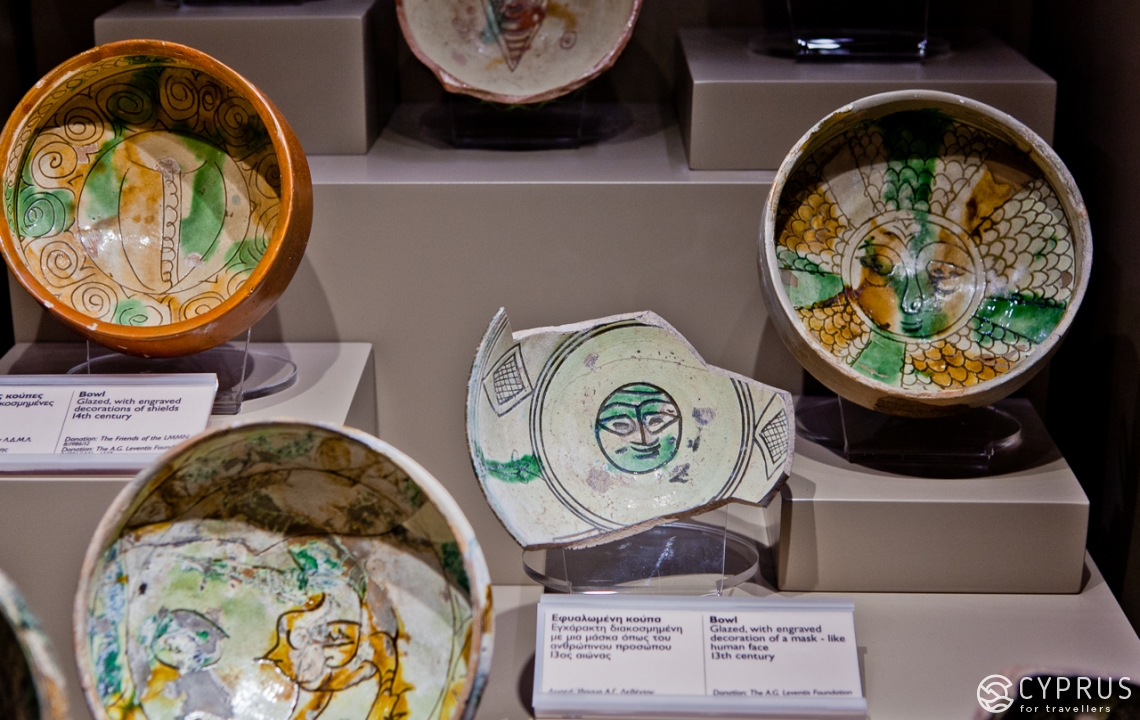
We move forward through the halls and time periods until we reach the hall of Caterina Cornaro. Caterina was the last queen of Cyprus and her dramatic personality and fate have been a source of inspiration for many artists, poets and composers who have created a number of marvelous works of art. Some of the foreign tourists and history lovers come to the museum just to «meet» the Venetian woman. The objects on display in the Cornaro Gallery come from private collections and were a gift from the Association of the Friends of the Museum and the Leventis Foundation. Other paintings and etchings displayed in the gallery come from Michael Zempekkis’ private collection.
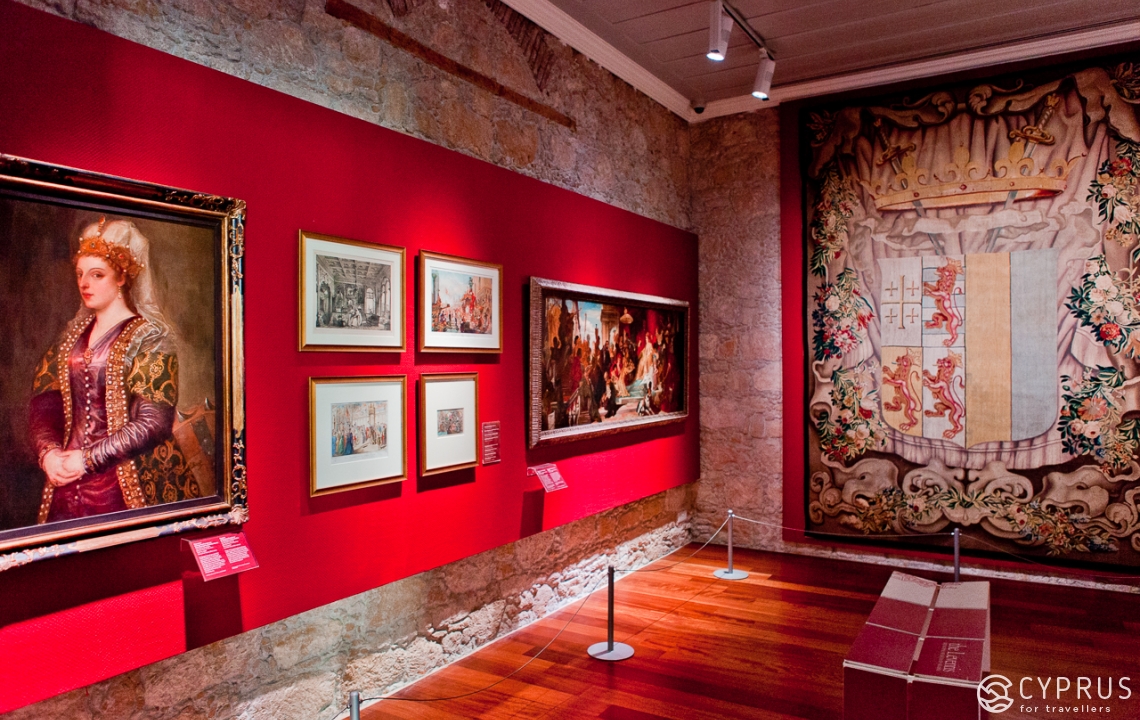
Incidentally, all large museum collections around the world include at least one object connected with Caterina Cornaro.
Moving on we enter the hall of antique paintings. Among many things, this hall displays engravings by famous cartographers (such as Vincenzo Maria Coronelli) that show how Nicosia’s topography was transformed over time. The last object on display is a colored map (dating September 1570). The display cases in front of it contain Venetian treasures, such as gold-plated cups, coins and spoons that were left behind by their owners when they departed from Cyprus.
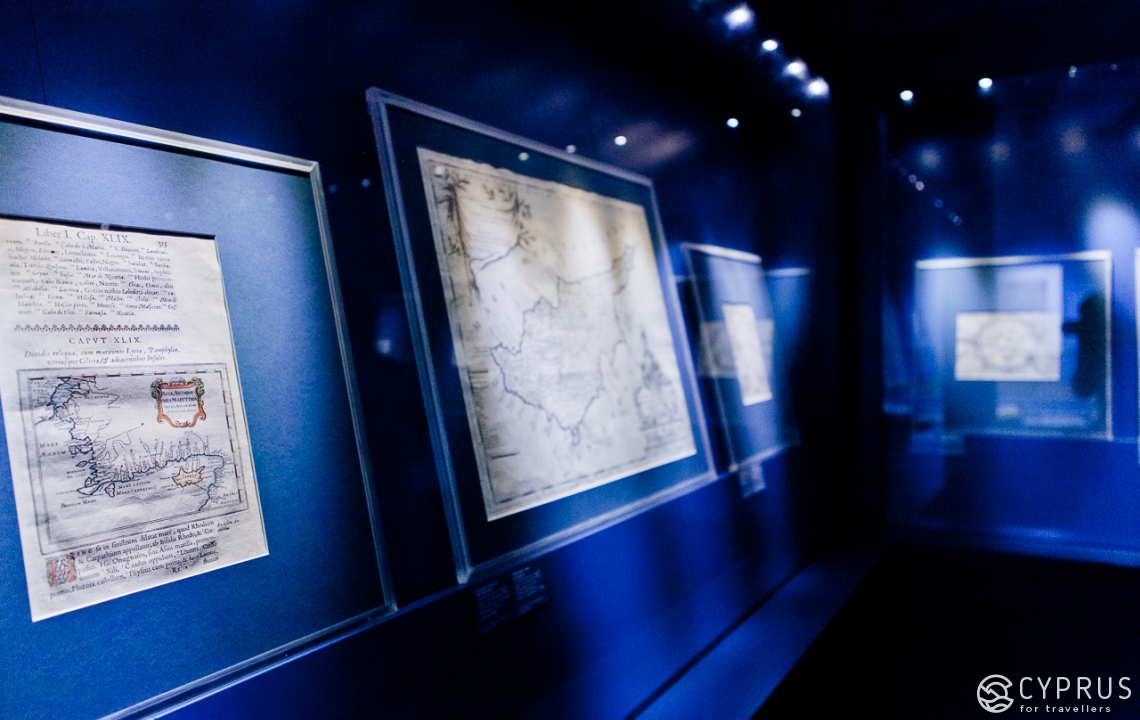
Another interesting fact: the famous fortified walls that encircle the Old Town — were in a way an experiment in engineering of that era. The bastions were named after aristocratic families from Italy and Cyprus, who donated money for their construction.
When the Ottoman Empire took control of the island (1571-1878), Middle Eastern influence replaced western influence, which is obvious both through household objects and art of that period. If you look at the museum model of a drawing room that belonged to a wealthy Cypriot, you will notice the Middle Eastern style of décor: striped blankets on the ottomans and floors covered with rugs. In the center of the composition there is a life-sized model of the owner, who is wearing Middle Eastern-style clothes, jewelry and a fez hat (a sign of high social ranking).
Book lovers might want to check out the following exhibition hall, which features antique volumes written by travelers and scientists about Cyprus (most of whom were European). An important part of this collection are issues of «Home Friend» — a popular magazine at the time.

The jewelry hall is equally impressive. Most of the items on display are encrusted silver pendants, embossed buckles, openwork bracelets, earrings and necklaces with half-precious stones. This jewelry was worn on special occasions by island residents.
Second floor galleries are dedicated to the British rule (1878-1960). When you first enter the gallery, you will see display cases featuring memorable gifts, souvenirs with images of the Royal family and the first edition of a travel guide titled: «Cyprus: our first colony and what we know about it» (by Fred Fisher, 1878). Incidentally, Cyprus became a colony only in 1925.

The display case containing mannequins, dressed as Cyprus residents of that period, demonstrate a shift away from Middle Eastern style towards that of Europe. All the items on display here (clothing, jewelry and accessories) were a gift from private collectors, who not only witnessed this time period personally, but were also the owners of these rare items.
Europe’s influence touched all aspects of life: the education system and social life were affected by the British rule.
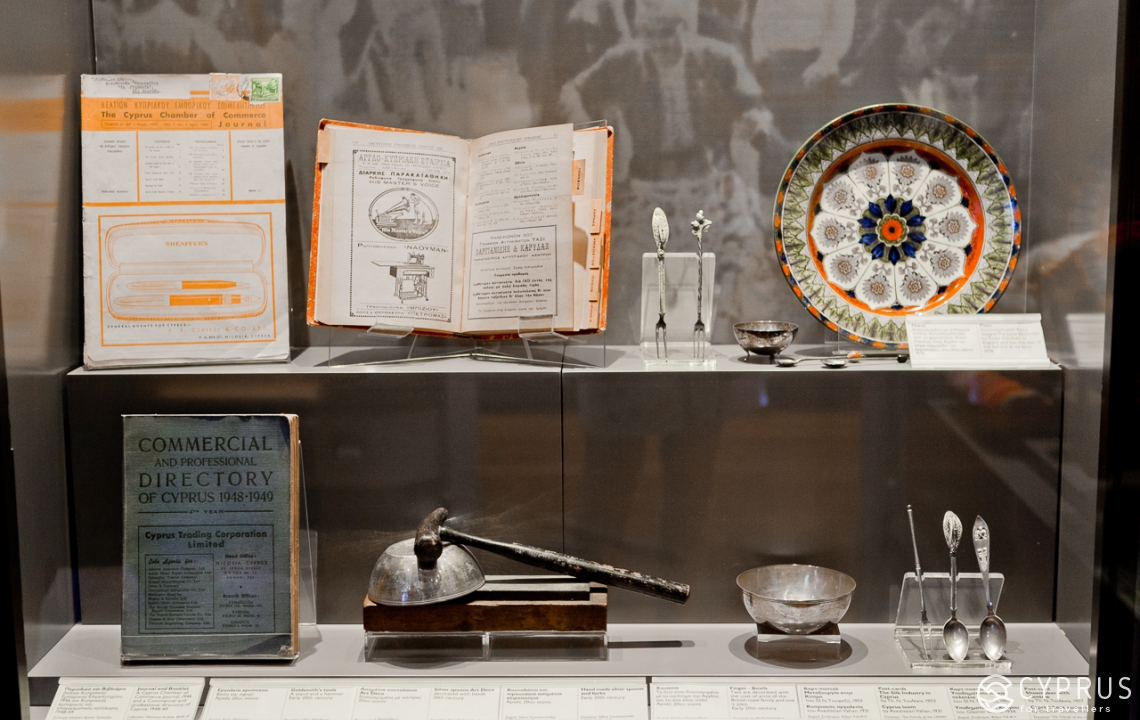
However, things didn’t change as much for the laymen as they did for the wealthy class, who gained an opportunity to go to school and work abroad. The life of the working class continued as usual: just like before street markets was were peasants and craftsmen came to sell their goods and the women came to shop. Samples of homespun fabrics, traditional household items and crafts should definitely be of interest to the visitors.
We then cross a metal bridge that hangs over a spiral staircase that leads to a temporary exhibition dedicated to embroidery and lace making in Cyprus. The exhibition includes beautiful clothing items, curtains and tablecloths adorned with fine needlework, which were worn and used by many generations of Cypriots. It seems that the curators were not only interested in educating the public about their country’s culture and history, but possibly also inspiring people to revive these crafts.
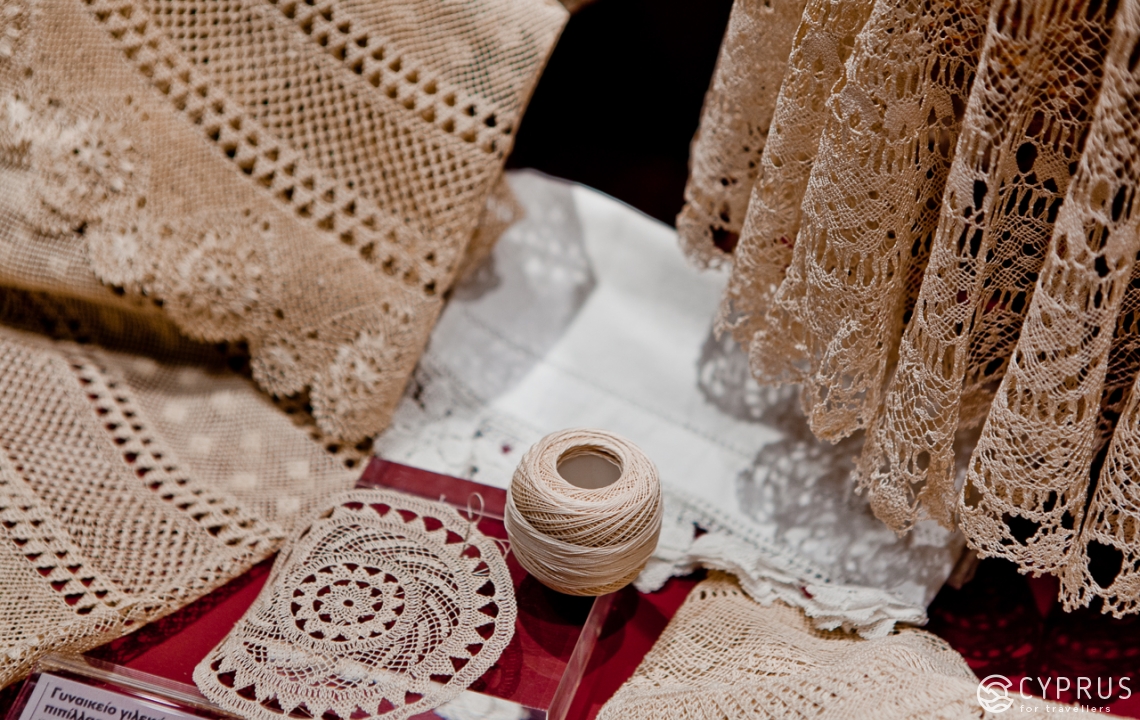
«This exhibition, called «Threads of Tradition: Lacesand Lace Embroideries of Cyprus» explores the tradition, technology and geographic origins of lace making and embroidery as well as the socio-economic life in Cyprus», says the director of the museum.
There is something humorous about the next display case, where bobbins are shown next to animal bones, which some seamstresses used during their work.
The last two stops in our tour are the gallery of antique ceramics that features objects from the Severis family private collection, as well as a visit to the Felactu collection.
Did you come to Nicosia to find out more about the history of Cyprus and its capital? Would you like to breathe in the atmosphere of antiquity and the medieval Mediterranean world? Are you interested in exploring the kaleidoscope of faces and time periods and discovering the mysterious life of rare artifacts, which only scientists were previously privy to? If you answered «yes», then open the heavy blue doors and step into the cool and quiet atmosphere of the Leventis Municipal Museum. Once you do, you will never be the same «tourists» you once were.
A side note: the museum also conducts educational and cultural activities for children and youth. There is an atrium, located in the courtyard, as well a library and a lecture hall. «Nicosia — Old Chora» is a fun learning experience for children that is offered as part of the «Educational Stations» program, where children and their parents «travel» through time and learn the history of Cyprus.
«The goal of the temporary exhibitions is to promote history, traditions and culture of Nicosia and Cyprus. The subject of these exhibitions is determined by the museum’s main sphere of interest and its permanent collection. Our temporary exhibitions and events are designed to cover a variety of aspects and include tours (offered in English and Greek), lectures, educational programs for adults, students and families with children», says Ms. Papanikola-Bakirtze.
«Our mission is to educate the public about the past», Ms. Papanikola-Bakirtze adds. «We also seek to revive and preserve ancient traditions, arts and crafts and encourage our visitors to reconnect with their roots».
There is a souvenir shop in the lobby, which sells replicas of some of the objects on display at the museum, as well as works by modern designers, and a wide variety of art and history books to suit any taste.
It is also hard to resist the charm of the museum’s vintage furniture, its spiral staircase and the mosaic floor.
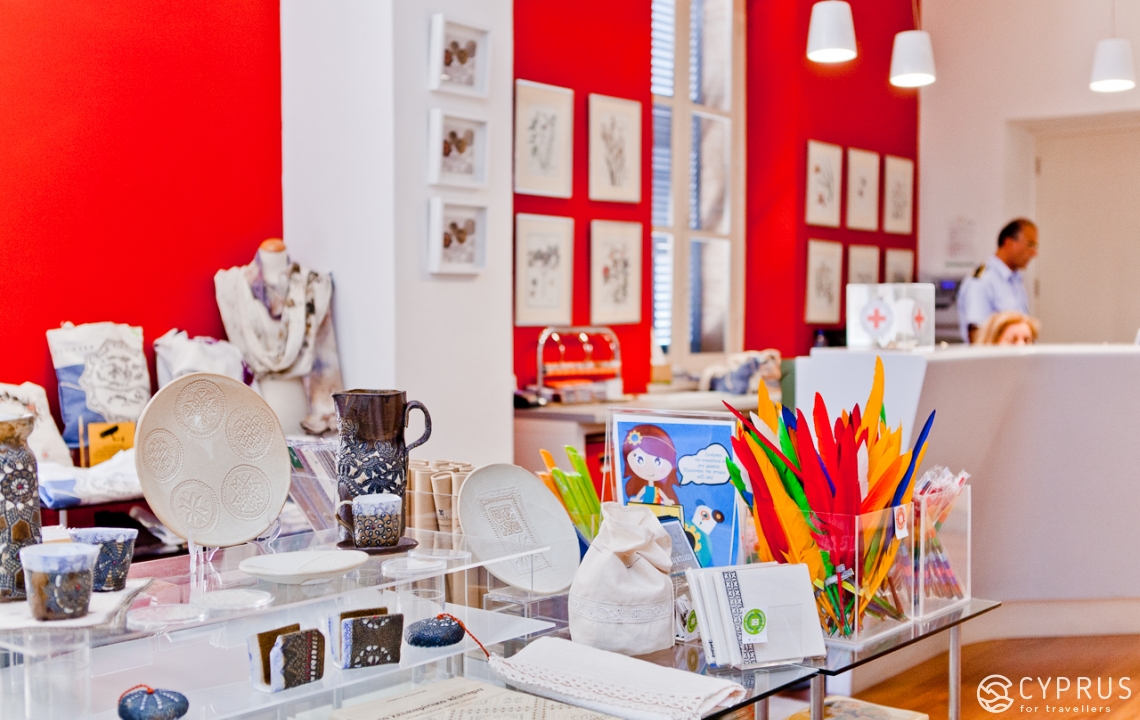
Entrance is free. Donations are welcome
Address: Ippokratous 17, Laiki Geitonia
Telephone: +357 22661475
Email: info@leventismuseum.org.cy
www.leventismuseum.org.cy
See you soon!
